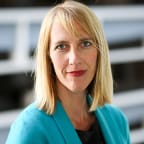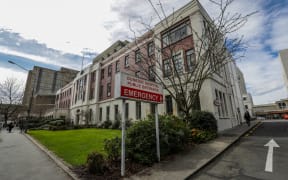
Photo: 123RF
Leading family doctors warn some people are not getting the care they need - or even having their lives cut short - because they cannot find a regular GP.
The College of General Practitioners medical director Luke Bradford said there was mounting international evidence that showed "continuity is key" when it came to primary care.
"There's a Norwegian study published last year, involving millions of people, which found those who had the same GP had fewer hospital admissions and used after-hours services less.
"At the 15-year mark, people who have had the same GP - and know that GP and the GP knows them - have a 25 percent decrease in all-cause mortality."
Porirua GP Bryan Betty, chair of General Practice New Zealand, said the Norwegian research confirmed what doctors already knew.
"When you know your patients, you can see changes over time. You know their history."
It also meant patients knew where to seek help when they needed it, he said.
Kaitaia local Ellen no longer has a regular doctor.
"When you go there it's a fresh trauma because you have to tell your story all over again.
"I've had doctors before, I've had them for years. I don't have to go through that, talking about me and my stuff over and over again like you do here. You get sick of it."
Māori in particular did not feel comfortable discussing health problems with someone they did not know, she said.
"The threshold for Māori going to the hospital, the doctor, is high anyway. It just got higher."
The latest Te Whatu Ora data shows preventable hospital admissions (for illnesses which should have been treated earlier) are up nationwide.
For babies and pre-schoolers, the rate shot up by 35 percent in the year to June.
Most of those children were suffering conditions such as skin infections, tummy bugs and pneumonia, which would not have put them in hospital if they had seen a doctor earlier.
Auckland was hit particularly hard with rates soaring by more than 60 percent.
At Dr Mamaeroa David's Henderson clinic, it has eight walk-in appointments every day for children who need urgent care - but it is not enrolling more patients.
"It was a question of, 'do we keep going until we explode?' Or is there a point at which you just say 'stop'. So we've had closed books for more than three months now."
A survey last year by General Practice New Zealand found more than half of its member clinics had closed their books.
Dr Betty said half of all medical graduates should be going into primary care, just to replace those who are retiring - but only about 15 percent have expressed an interest.
"We do not have enough general practitioners in this country therefore the workloads are going up substantially.
"In response to this, a number of GPs are not giving up their practice necessarily, but they are cutting back their hours to make it manageable.
"And that's a hidden problem within the system."
Back in Kaitaia, Ellen feels fortunate to be enrolled with a practice, even though she no longer has a regular doctor.
Her diabetic brother struggled to get a GP after he was deported from Australia, and her granddaughter could not find a doctor who would take on her and her newborn baby.
"She couldn't get her baby into the doctor's so we were left trying to find some way to get her into the doctor.
"The father ended up taking her into the doctor because he had a doctor."
Te Whatu Ora data showed as of 31 October, there were 4,943,113 people (96 percent of the population) enrolled with a primary health organisation.
Based on the current estimated population of New Zealand at 5,239,017, that means about 295,904 are without a GP - a rise of 144,254 (95 percent) since before the start of the pandemic at 151,650 in 2019.
However, the situation has improved since two years ago 2021, when it hit a peak of 344,851 or 6.5 percent of the population. About 17 percent of Māori are not enrolled.




